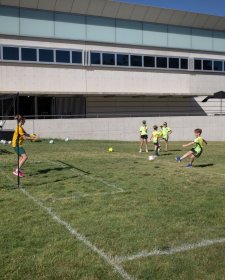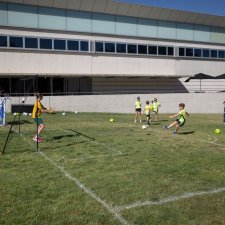- About us
- Support the Gallery
- Venue hire
- Publications
- Research library
- Organisation chart
- Employment
- Contact us
- Make a booking
- Onsite programs
- Online programs
- School visit information
- Learning resources
- Little Darlings
- Professional learning
Chips Rafferty MBE (1909–1971), screen actor, was born John Goffage in Broken Hill and nicknamed 'Chips' as a boy. He worked in a number of jobs including as a shearer, miner, drover and pearl diver before making his film debut in Dad Rudd, M.P. (1940). Director Charles Chauvel saw his potential and cast him in a lead role in Forty Thousand Horsemen (1940), for which he adopted the screen name Chips Rafferty. A year later, during the Second World War, Rafferty enlisted in the Royal Australian Air Force. He was released to act in propaganda films for the Department of Information, including The Overlanders (1946), which was a hit in Australia and in Britain. Rafferty made a foray into Hollywood for The Desert Rats (1953), and was briefly marketed as Australia's answer to Cary Grant, but he was more in his element playing the lean and laconic bushman. Variations on this character appear throughout Rafferty's career, and his films contributed to the popular notion of Australian masculine identity: The Rats of Tobruk (1944), Eureka Stockade (1949), Kangaroo (1952), The Sundowners (1960) and They're a Weird Mob (1966). His final film was the classic Wake in Fright (1971), shot in his hometown of Broken Hill.
While on war service, Max Dupain transferred to the Department of Information to photograph Australia for promotional purposes. He photographed Chips Rafferty on the set of The Overlanders in around 1945.
Purchased with funds provided by Timothy Fairfax AC 2003
Tim Fairfax AC (54 portraits supported)



Create your own fan bracelet, design a soccer card, and show off your skills with fun movement challenges.



Celebrate our new commissioned portrait of the CommBank Matildas by artist Angela Tiatia.



Discover the magic of sport and storytelling through art and play!